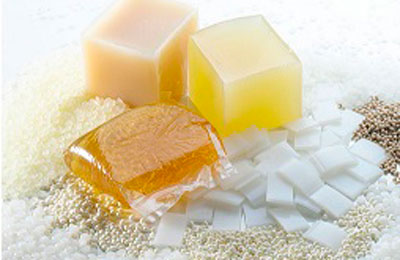
Study covers....acrylics, epoxies, polyurethanes, vinyl acetates, silicones
and other industrial adhesives
South Africa, Kenya see rapid industrial adhesives usage growth
DUBAI, February 5, 2015
The transition from conventional materials, such as wood and glass, to lighter and more economical materials like plastics is driving the industrial adhesives market in South Africa and Kenya, according to a recent report.
The new analysis from Frost & Sullivan ‘Key Growth Opportunities in the Industrial Adhesives Market in South Africa and Kenya,’ found that the market earned revenues of about $156.2 million last year and is estimated to reach $183.3 million in 2018.
The study covered acrylics, epoxies, polyurethanes, vinyl acetates, silicones and other industrial adhesives.
With the adoption of these new materials comes the need for better methods of assembly and suitable bonding components. In Africa, both South Africa and Kenya have been witnessing a rapid increase in the use of industrial adhesives across several industries, including building and construction, automotive assembly and packaging, said the report.
While the growing construction industry has been fuelling the industrial adhesives market in Kenya, the expanding automotive assembly industry has been responsible for growth in the South African market, it said.
Both of these markets are receiving a boost from the implementation of government-funded infrastructure projects and investment into the car manufacturing industry.
“As South Africa and Kenya are the largest, most sophisticated economies in their respective economic blocs, they serve as a strategic entry point for investors,” said Frost & Sullivan chemicals, materials and food research analyst.
“Consequently, both countries have become hotspots for industrial adhesives manufacturers.”
The most significant challenge for industrial adhesives manufacturers, however, is the increase in the price of petroleum by-products, largely due to the shale gas boom, said the report.
The use of lighter feeds in oil cracking reduces the output of materials such as propylene, benzene and toluene, all of which are major components in glue formulation.
Coupled with the rising consumer demand and scarcity of the vinyl acetate monomer (VAM), these factors have driven up the price of raw materials, and subsequently the price of adhesives.
“To minimise the impact of VAM shortages and price fluctuations, industrial adhesives manufacturers and suppliers will need to establish strategic relationships with upstream raw material suppliers,” noted the analyst. “This will be vital as competitive pricing is key to market development.”
Additionally, industrial adhesives manufacturers and suppliers should strengthen co-operation with end users to obtain first-hand feedback on customer satisfaction and on-site product quality performance.
As the industrial adhesives industry is technology-driven, it will be important to build a reputation through continuous research and development (R&D) and to educate customers on existing products and innovations, it said.
Overall, customers have been looking to work with fewer and more capable industrial adhesives suppliers with technical expertise. Intense competition in terms of expertise and technologies, rather than price, has thus become a trait of the South African and Kenyan industrial adhesives market, said the analysis.
The South African industrial adhesives market will respond to competitive pressures through continued consolidation, wherein small- and medium-sized participants are acquired by larger entities, it said.
In Kenya, however, new participants will enter the market and existing manufacturers will expand their production capacity by at least 40 per cent during the 2013-2018 period, it added. - TradeArabia News Service







